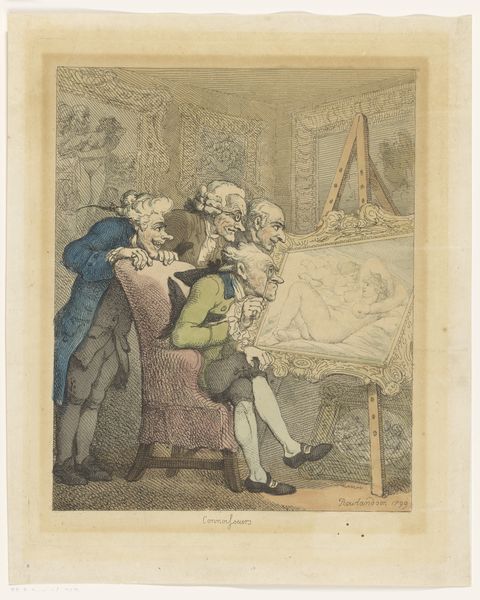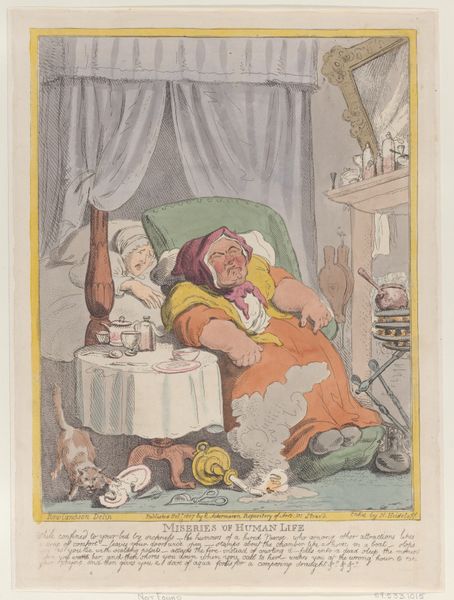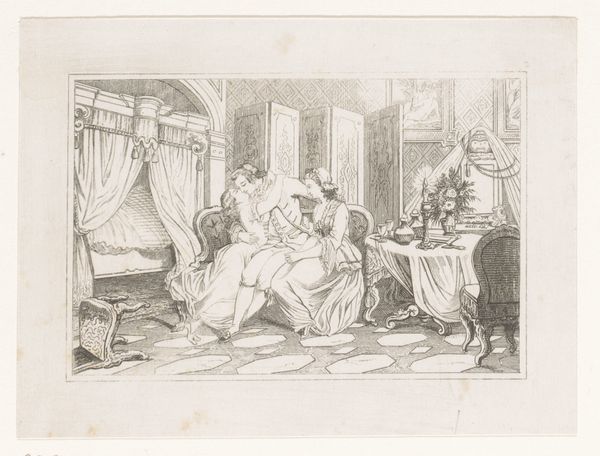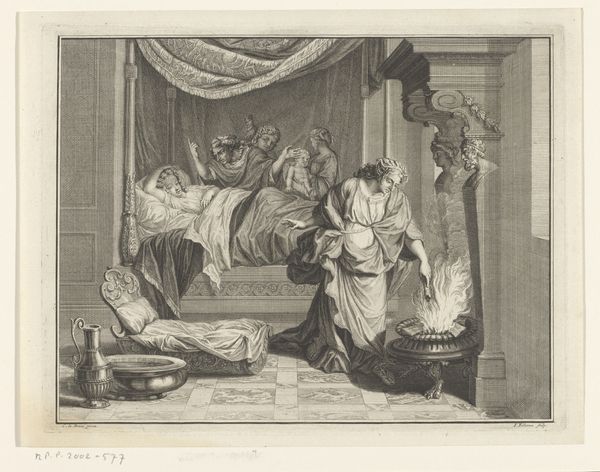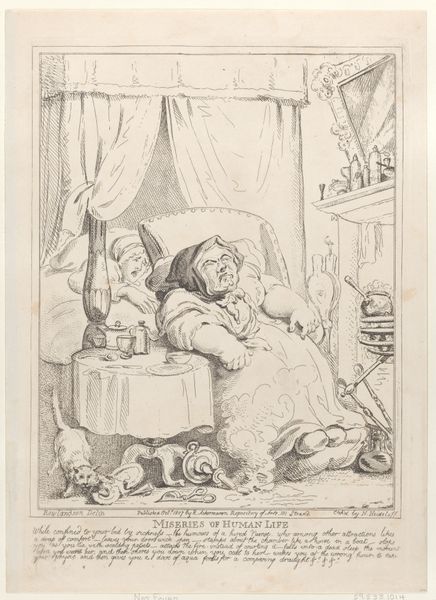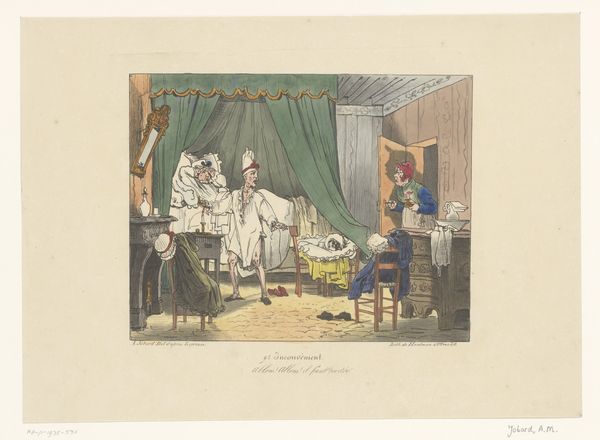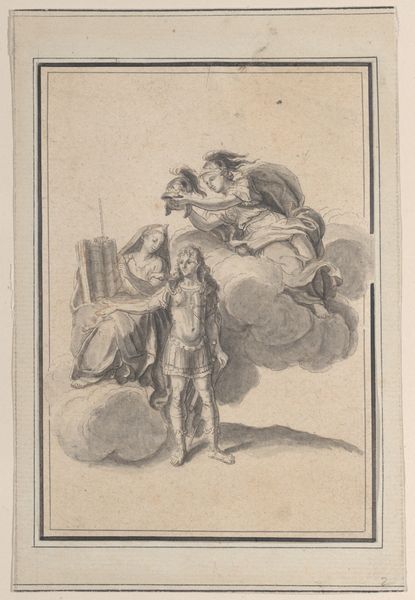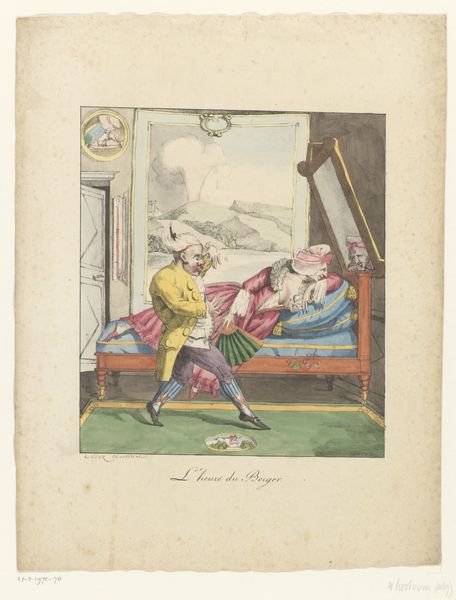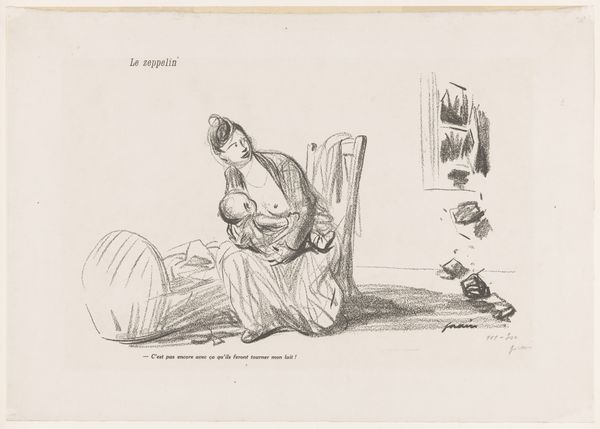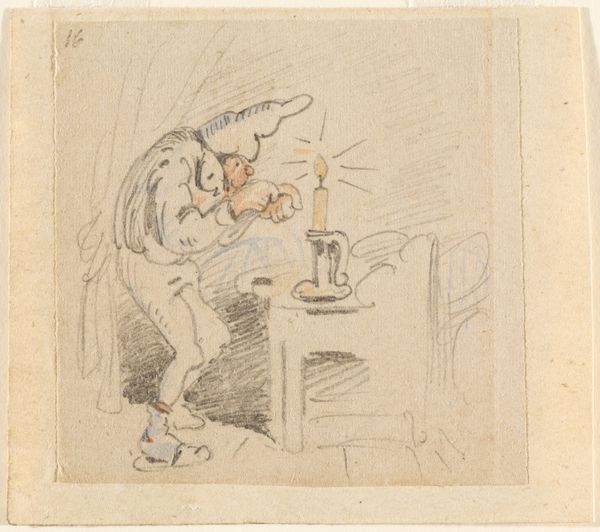
print, watercolor
#
narrative-art
# print
#
caricature
#
watercolor
#
romanticism
#
genre-painting
#
watercolor
Dimensions: height 230 mm, width 270 mm
Copyright: Rijks Museum: Open Domain
Curator: This watercolor and print, believed to be created sometime between 1825 and 1838, is entitled "Jaloezie," which translates to "Jealousy." The piece is attributed to George Cruikshank, and we currently house it here at the Rijksmuseum. Editor: My immediate reaction is that the artist captured a chaotic interior space with meticulous detail; yet, overall it has a fairly flat, almost theatrical compositional construction. There is no focal point at first sight, but the distressed figure does capture the viewer's attention in the end. Curator: Cruikshank was masterful at portraying the psychology of emotions through caricature. Note how "Jealousy" is embodied not just in the central figure, but in these almost imp-like creatures tormenting him – little gremlins acting out scenes of betrayal and mockery. The visual language of Romanticism combines seamlessly with narrative-art elements. Editor: I see what you mean, but to me the artist does make interesting use of lines to almost "frame" this gentleman in the centre, contrasting with all the round shapes across the entire plane of representation. And of course, his sour, despondent mood speaks of inner tension or maybe moral disarray; however, there could be so many more meanings if you allow your feelings to wander across the different visual details of this print. Curator: Precisely. The objects scattered around – a discarded hat, letters, playful creatures – all contribute to the symbolism of the piece, and that sense of being overwhelmed, attacked on all sides, a common experience when seized by jealousy, which cuts deep into the cultural memory of emotional turmoil, particularly between the personal and the political, as it always plays out publicly in caricatures. Editor: Despite the heavy theme, there’s also a deliberate artificiality to it, an intriguing juxtaposition – the high detail doesn't make the experience real or immediate but oddly frozen and stiff; like watching figures on a set, acting out in the mannered and calculated language of Romanticism. Curator: An insightful observation. Ultimately, the image, however dramatic or exaggerated, makes a statement about human vulnerability that, unfortunately, continues to resonate today. Editor: Indeed, and perhaps that tension between careful formal arrangement and expressive subject matter gives the image such lasting power.
Comments
No comments
Be the first to comment and join the conversation on the ultimate creative platform.
